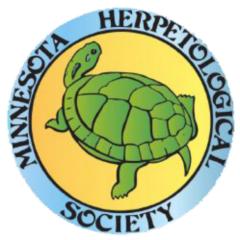Learn more about Amphibians and Reptiles in Minnesota.
MHS is committed to the study and conservation of Minnesota’s 50 species of amphibians and reptiles. We regularly fund grants in herpetological conservation and research conducted in Minnesota and beyond. MHS also conducts field surveys throughout the state.
MHS is also active in many aspects of herpetological education. We developed and implemented educator workshops to help prepare classroom teachers and naturalists to use reptiles and amphibians in the classroom by providing training and materials, beginning with four “Tips and Tools for Teaching About Reptiles and Amphibians” workshops in 2001. Find out more information about HandsOn events here.
Learn more about Minnesota’s reptiles and amphibians by clicking on the following links:
Having a problem with snakes?
Tips for dealing with snakes in your home or yard from a MHS member and wildlife biologist.
Click here for the MHS pamphlet on how to identify venomous snakes in MN.
There’s a turtle crossing the road. What do I do?
Here is some useful information about protecting turtles on roads and in your garden.
Click here for the MHS pamphlet to learn how you can help a turtle.
For more information on Endangered, Threatened, and Special Concern Species:
Minnesota Department of Natural Resources’ Rare Species Guide
Endangered species pamphlet created by MHS’s Jeff LeClere.
For the most up-to-date list of Minnesota’s endangered, threatened, and special concern species visit the MNDNR’s Endangered Species page.
